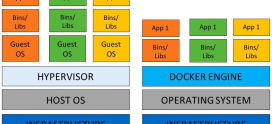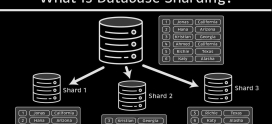
Understanding the Role of Feedback Loops in Email Marketing
Have you ever hit ‘send’ on an email marketing campaign and then sat back, anxiously checking your analytics but feeling like you’re tossing a message into a black hole? If that rings a bell, you’re not alone. Many marketers share this frustration, wondering if their efforts are reaching the audience, if their messages resonate, and how they can continuously improve. You’re in a constant cycle of testing and hoping, aren’t you? While email marketing is a powerful tool for engagement, the path to effectiveness isn’t always clear. That’s where feedback loops come into play.
By understanding and implementing feedback loops in your email marketing strategy, you can shift from guesswork to insight, using real data to drive your decisions. Imagine riding a bike on a winding road; feedback loops serve as your map and compass, guiding you toward your desired destination—better engagement, higher open rates, and ultimately, more sales. Let’s dive into this concept, addressing the common challenges you face and equipping you with practical tips to cultivate effective feedback loops in your email marketing campaigns!
What are Feedback Loops?
At its simplest, a feedback loop is a process where the outputs of a system are circled back and used as inputs. In email marketing, this means the reactions and behaviors of your audience inform and enhance your future campaigns. Think of it like a conversation where you listen to what the other person is saying; each response guides you to ask better questions and share more relevant information. Feedback loops can help you refine your strategies and create messages that truly resonate with your audience.
Why Are Feedback Loops Important in Email Marketing?
Feedback loops are essential for several reasons:
- Improved Engagement: By analyzing how subscribers interact with your content, you can create more personalized and relevant experiences, leading to higher engagement rates.
- Data-Driven Decisions: Feedback turns your campaigns from a guessing game into a strategy backed by data.
- Customer Retention: Understanding customer needs and feedback allows you to maintain a happy subscriber base, which translates to loyalty.
Types of Feedback Loops in Email Marketing
1. Open Rate Feedback
Your email open rate is one of the first indicators of your campaign’s success. If readers aren’t opening your emails, it’s time to examine your subject lines and sending times. Are they catchy enough? Are you testing different approaches to find what works best? Regularly analyzing open rates allows you to pivot your strategy accordingly.
2. Click-Through Rate (CTR) Feedback
A high unsubscribe rate can be daunting, but it’s also a valuable feedback tool. If subscribers are opting out, it may signal that your emails aren’t providing the value they need. Similarly, bounce rates can highlight issues such as outdated contact lists or domain problems. By addressing these, you can maintain a healthy subscriber list. Don’t hesitate to ask your subscribers directly! Using short surveys can yield insightful information about preferences, content types, and purchasing behavior. Inquiries like, “What type of content do you want more of?” can steer your future campaigns to align better with subscriber expectations. While emails are direct communication, don’t forget about the broader conversation happening online. Monitoring your social media channels can give you feedback on how your audience perceives your brand and messages. Are they discussing your campaigns positively or negatively? Pivotal cues can help fine-tune your email content, ensuring it serves your audience’s needs. Now that we’ve established the importance of feedback loops, let’s discuss how you can implement them effectively in your email marketing efforts. Before you hit send, have specific goals for what you want each campaign to achieve. Are you looking for more opens, clicks, or conversions? Defining your objectives lays the groundwork for analyzing feedback. A/B testing allows you to compare different elements of your email to see what works. Whether it’s subject lines or layouts, constant testing will provide a clear overview of what appeals to your audience. Your email marketing platform likely provides numerous analytics tools. Schedule regular check-ins to analyze feedback data, noting changes over time and adjusting your strategy as necessary. An outdated or poorly curated email list can drastically affect your outcomes. Regularly cleanse your list, removing inactive subscribers and ensuring you’re reaching the right audience. This step is vital for both bounce rates and open rates. Once you gain insights from your feedback loops, ensure you apply them consistently. Develop a holistic strategy that takes into account the preferences and behaviors of your audience. Engage with them, keep your content fresh, and always strive for improvement. Implementing feedback loops is only half the battle; measuring their success is equally crucial. Assess feedback effectiveness by:3. Unsubscribe and Bounce Rates
4. Survey Feedback
5. Social Media Monitoring
Implementing Feedback Loops
1. Set Clear Objectives
2. Use A/B Testing Wisely
3. Regular Data Analysis
4. Maintain a Clean List
5. Nurture Your Subscribers
Measuring the Success of Feedback Loops
Maintaining the Feedback Loop Cycle
A feedback loop is not a one-time effort; it thrives on consistency! Regularly encouraging responses, adapting strategies based on feedback, and measuring outcomes keeps you in tune with your audience. View your email marketing strategy as a living entity—always changing, growing, and responding to the needs of your subscribers.
FAQs
What is a feedback loop in email marketing?
A feedback loop in email marketing is a process where the responses and behaviors of your recipients inform your future emails and strategies. This helps improve engagement and effectiveness by using real data to make decisions.
How can I measure engagement through feedback loops?
You can measure engagement by analyzing metrics like open rates, click-through rates, unsubscribe rates, and survey feedback. These indicators offer valuable insights into how well your content resonates with your audience.
How often should I analyze feedback data?
Regularly analyzing feedback data—ideally after each campaign—is crucial. Establish a schedule to review metrics and apply insights continuously to maintain a responsive email strategy.
How can I collect feedback from my subscribers?
Collect feedback through surveys, direct questions in your emails, or by monitoring reader engagement. Ask subscribers about their preferences, content types, and overall experience to gather valuable insights.
What tools can help me implement feedback loops?
Many email marketing platforms, such as MailChimp and Constant Contact, provide analytics tools that allow you to track performance metrics. Additionally, survey tools like SurveyMonkey can help gather subscriber feedback.
Conclusion
In the fast-paced world of email marketing, understanding and implementing feedback loops can be a game-changer. By leveraging insights into your audience’s preferences and behaviors, you can create more relevant, engaging content. Remember that feedback is not just a tool; it’s a continuous cycle of improvement that Fuels your marketing strategy. Embrace the feedback loop as an essential part of your email campaigns, and watch as your engagement rates soar, ultimately leading to greater customer loyalty and increased sales.
As you refine your approach, always be mindful of your audience’s needs and preferences. The more you listen and adapt, the more effectively you’ll be able to build lasting relationships with your subscribers. Start applying feedback loops today, and transform your email marketing into a highly effective and data-driven strategy that resonates with your audience. Happy emailing!









